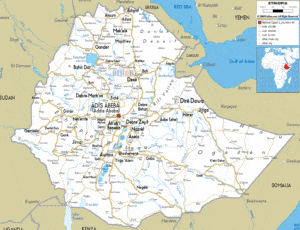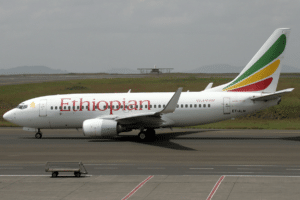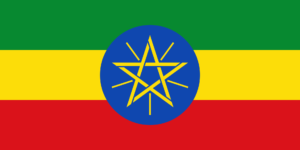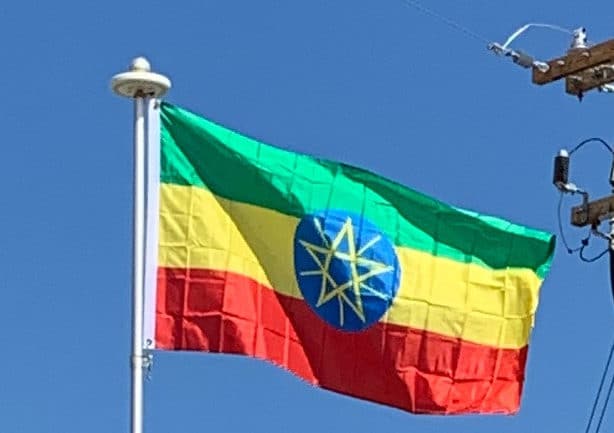As the first part of a ten-year Road Sector Development Program, between 1997 and 2002 the Ethiopian government began a sustained effort to improve its infrastructure of roads. As a result, as of 2015 Ethiopia has a total (Federal and Regional) of 100,000 km of roads, both paved and gravel.

Ethiopia had 58 airports as of 2012, and 61 as of 2016. Among these, the Bole International Airport in Addis Ababa and the Aba Tenna Dejazmach Yilma International Airport in Dire Dawa accommodate international flights. Ethiopian Airlines is the country’s flag carrier, and is wholly owned by the Government of Ethiopia.

From its hub at the Bole International Airport, the airline serves a network of 102 international passenger, 20 domestic passenger, and 44 cargo destinations. It is also one of the fastest-growing carriers in the industry and continent.
Flag of Ethiopia:
The national flag of Ethiopia was adopted on 31 October 1912. It conforms to the specifications set forth in Article 3 of the 1995 Constitution of Ethiopia. However, the diameter of the central disc is increased from that of the flag used from 6 February to 31 October 1996. The three traditional colors of green, yellow and red date back to Iyasu V (reigned 1913–1916).

The current flag and emblem were adopted after the defeat of Ethiopia’s Marxist dictatorship headed by Mengistu Haile Mariam. The emblem is intended to represent both the diversity and unity of the country. Blue represents peace, the star is said to represent diversity and unity, and the sun’s rays symbolize prosperity. The green recalls the land, yellow stands for peace and hope, and red is symbolic of the strength and sacrifice of those who fought with their lives for Ethiopia.
Details about the several historical flags and variations on the current flag can be found elsewhere.
